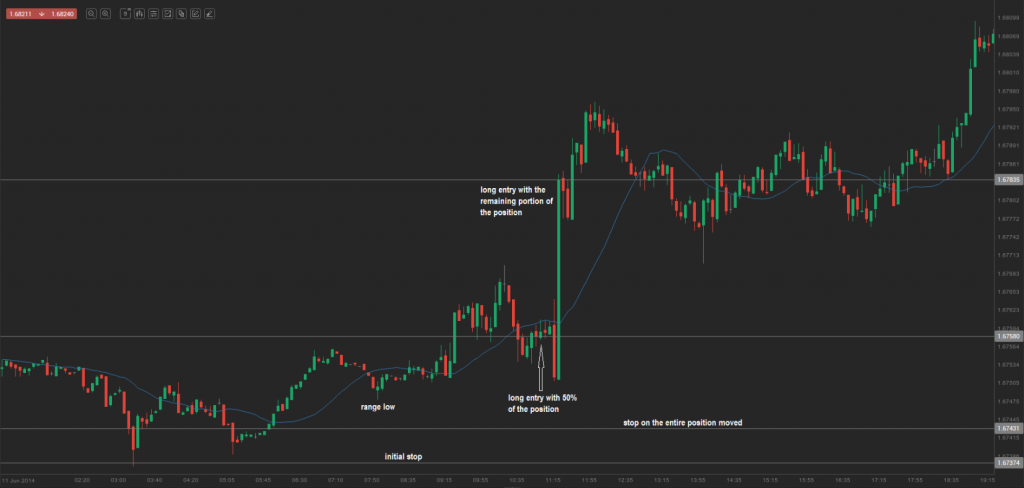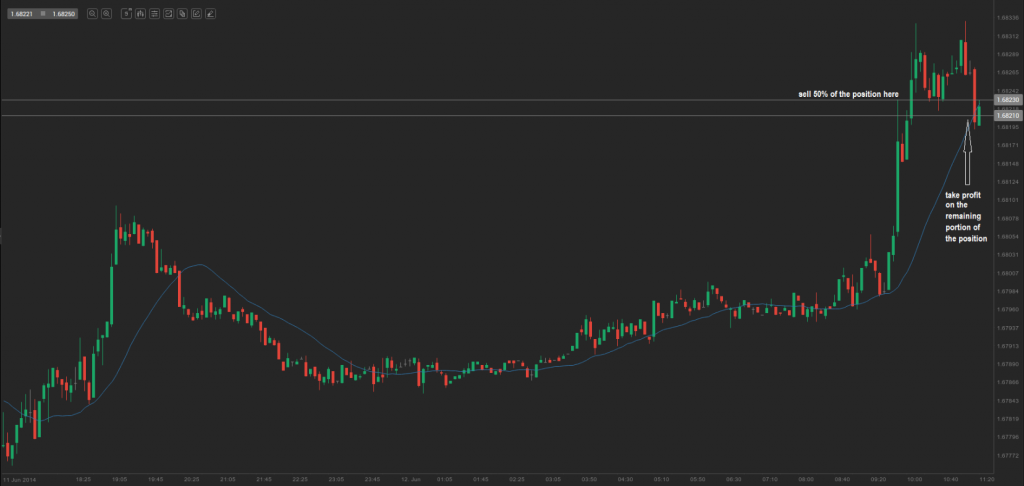Trading the news – combining the proactive and the reactive approaches
This lesson will cover the following
- A quick overview
- Steps a trader needs to follow for this strategy
As we said in the previous articles, both approaches have their issues. Therefore, it is better for a trader to combine them. It is possible that a trader may use a specific economic report in order to forecast other economic data, but if all the pieces of data do not point to one and the same economic situation, then the trader may lose some of his/her confidence. So, a trader may enter with 50% of his/her position before the key economic report is released. In case the actual number/reading comes in consonance with his/her data interpretation and the market moves in his/her favor, the trader can make another entry with the remaining portion of the position after the news release. In case the traders interpretation is incorrect and the market moves against him/her, then the loss will be much smaller.
What does a trader need to do?
Now, let us talk about the steps, that a trader needs to follow when implementing this combined strategy.
When going long:
the trader needs to enter the market with 50% of his/her position at least 20 minutes before the key economic data is released;
the trader needs to place a protective stop at least 10 pips below the low of the range, or at least 30 pips below his/her entry, whichever is nearer.
In case the actual number/reading comes in consonance with traders expectations and favors his/her proactive strategy, then he/she needs to do the following:
the trader needs to make another entry with the remaining portion of his/her position at least five minutes after the news release;
the trader needs to place a protective stop on his/her entire position at a distance 40 pips below the second entry point and then move it by the 20-day Simple Moving Average (SMA);
the trader needs to take profit on 50% of the position when the market moves in his/her direction by 40 pips;
the trader needs to trail the stop on the remaining portion of the position by the 20-day SMA.
When going short:
the trader needs to enter the market with 50% of his/her position at least 20 minutes before the key economic data is released;
the trader needs to place a protective stop at least 10 pips above the high of the range, or at least 30 pips below his/her entry, whichever is nearer.
In case the actual number/reading comes in consonance with traders expectations and favors his/her proactive strategy, then he/she needs to do the following:
the trader needs to make another entry with the remaining portion of his/her position at least five minutes after the news release;
the trader needs to place a protective stop on his/her entire position at a distance 40 pips above the second entry point and then move it by the 20-day SMA;
the trader needs to take profit on 50% of the position when the market moves in his/her direction by 40 pips;
the trader needs to trail the stop on the remaining portion of the position by the 20-day SMA.
In case the actual number/reading differs from traders expectations and does not favor his/her proactive strategy, then a second entry in the market should not be made, while the initial position should be closed.
Example
Again we look at the UK jobless claims report, while using the 5-minute chart of GBP/USD. We make a long entry with 50% of our position 20 minutes before the official report is released. The entry point is at 1.6758, while our protective stop is 10 pips below the range low, or at 1.6737. Five minutes after the official release, we make another long entry with the remaining 50% of the position at 1.6783. The protective stop for the entire position is then moved to 40 pips below the second entry point, or at 1.6743. We sell 50% of our position at a distance of 40 pips from the second entry point, or at 1.6823 (it occurs at 9:50 GMT+3 on the next trading day). Next, we trail the stop on the remaining portion of the position by the 20-day SMA and exit it when the price moves back below the moving average. This occurs at 11:15 GMT+3 at 1.6821. The total profit on our trade is 65 pips (1.6823-1.6758) + 38 pips (1.6821-1.6783), or 103 pips, while the average profit is 51.5 pips.

